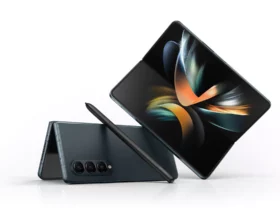The potential of quantum computing is enormous, but according to the latest details, the distances over which entangled particles can reliably carry data is still a huge hurdle. Check out the latest breakthrough below.
Quantum information breakthrough
Even the slightest disturbance can have a significant impact on the stability of quantum relationships.
To prevent such issues, quantum computing researchers have devised techniques to stabilize long optical fibers or leverage satellites to preserve signals through space’s near-vacuum.
However, building a quantum-based network is not just about transmission.
Scientists have long been attempting to develop a system of interconnected units or ‘repeaters’ that can store and retrieve quantum information, similar to classical computers, to enhance the network’s range.
A team of researchers has developed a system of atomic processing nodes that can hold the vital states produced by a quantum dot at wavelengths that are compatible with the current telecommunications infrastructure.
To achieve this, two devices are required: one that can create and potentially entangle photons, and another ‘memory’ component that can store and retrieve the crucial quantum states within those photons whenever needed, without disturbing them.
“Interfacing two key devices together is a crucial step forward in allowing quantum networking, and we are really excited to be the first team to have been able to demonstrate this,” says quantum optics physicist and lead author Sarah Thomas, from the Imperial College London (ICL).
The newly proposed system, partly made in Germany and assembled at ICL, uses a semiconductor quantum dot capable of emitting a single photon at a time.
The quantum dot is placed in a cloud of hot rubidium atoms, which serves as quantum memory.
The memory component can be turned on and off with a laser, allowing the photons’ states to be stored and released from the rubidium cloud as needed.
Although this is a proof-of-concept prototype in a basement lab, and the distances over which this particular system can transmit quantum memories have not been tested, the feat could create a strong foundation for the quantum internet.
This system is better than relying on entangled photons alone, as it is not based on entangled photons.
“This first-of-its-kind demonstration of on-demand recall of quantum dot light from an atomic memory is the first crucial step toward hybrid quantum light-matter interfaces for scalable quantum networks,” the team writes in their published paper.
Researchers in quantum computing have been trying to link up photon light sources and processing nodes that store quantum data for some time, without much success until now.












Leave a Reply